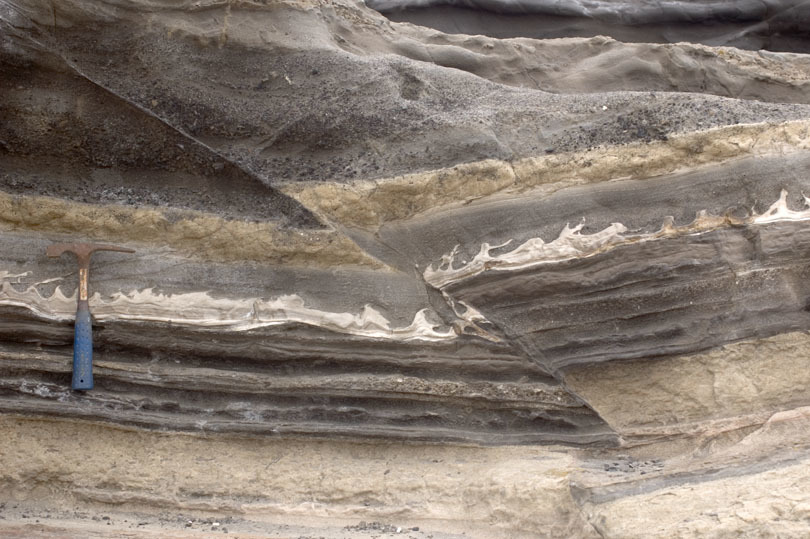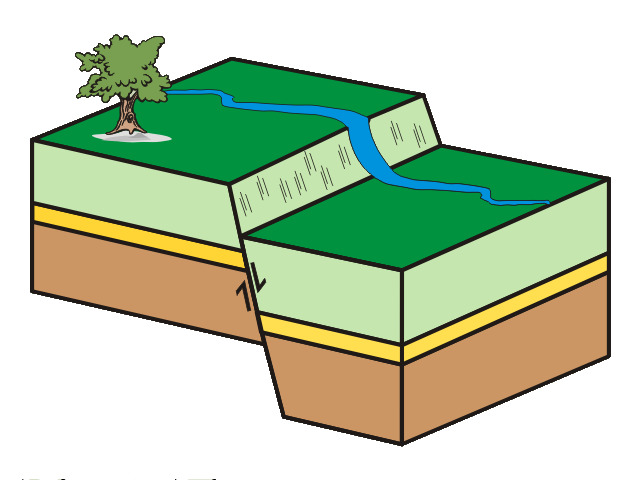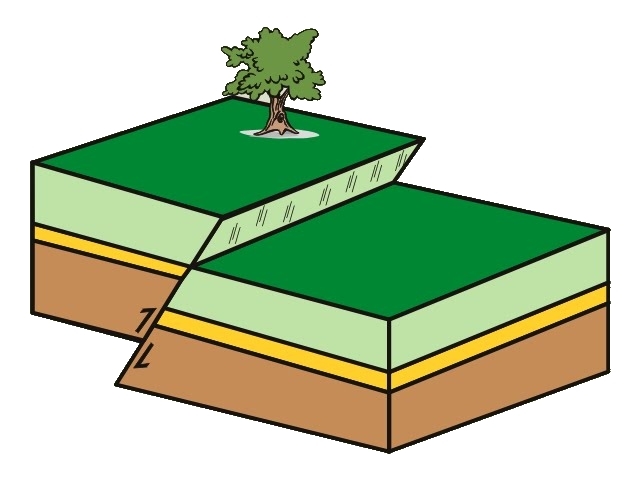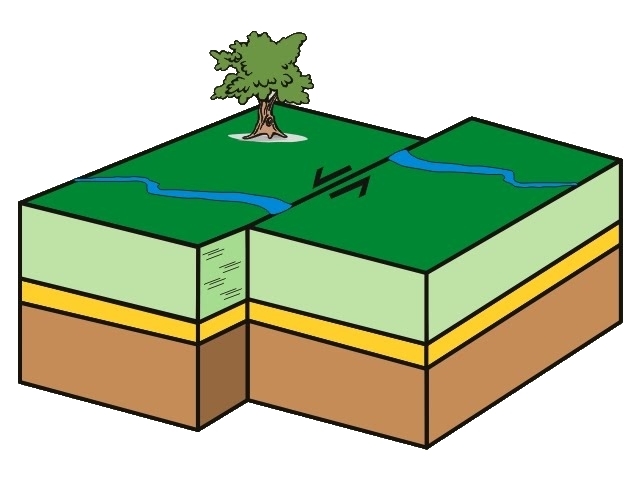
Uma Falha, é um acidente tectónico originado por fractura do terreno, ao longo da qual houve deslocamento relativo dos dois compartimentos contíguos. Este fenómeno geológico surge em função da pressão aplicada por uma força, em que a pressão exercida excede a capacidade de resistência e plasticidade das camadas rochosas.

As falhas podem ser classificadas em três tipos diferentes: falhas normais, falhas inversas e falhas de desligamento.
Falhas Normais: formam-se em ambientes distensivos e são causadas devido à expansão da crosta terrestre, neste tipo de falhas o bloco superior sobe sem se sobrepor ao bloco inferior.

Falhas Inversas: formam-se em ambientes compressivos e resultam das forças compressoras horizontais causadas pela contracção da crosta terrestre, neste tipo de falhas o bloco superior sobe e sobrepõe-se parcialmente ao inferior.

Falhas de Desligamento: formam-se em ambientes de tensões tangenciais e ocorrem quando existem campos de forças também horizontais mas com sentidos opostos dos dois lados da fractura, sendo o plano de falha exclusivamente vertical.

A Cache tem por principal objectivo elucidar os geocachers acerca dos diferentes tipos de falhas geolócicas e as forças associadas às mesmas. Assim, em ordem a realizar o seu log, responda às seguintes questões .
1 - Calcule a altura do afloramento (inicio da falha até ao areal).
2 - Calcule a distância da falha até à placa de perigo indicadora no local “Queda de Blocos”.
3 -Estime o angulo de inclinação da falha (medido em graus).
As respostas deverão me chegar através de email ou por mensagem no chat do geocaching, após o envio das respostas poderá realizar o seu log, caso exista alguma dúvida em relação ás respostas dadas será contactado para que as mesmas possam ser esclarecidas. Adicionalmente, gostaria de vos pedir que associassem ao vosso log, fotos da vossa visita a esta earthcache, no entanto segundo as guidelines as mesmas são opcionais.
Antes de terminar gostaria de agradecer ao amigo geocacher viegasK9, por me permitir dar continuidade ao seu excelente trabalho, a ti amigo um grande BEM-HAJA!
| I have earned GSA's highest level: |
 |

Uma Fault is a tectonic accident caused by fracture of the ground, along which there was relative displacement of the two contiguous compartments. This geological phenomenon arises from the pressure applied by a force, in which the pressure exerted exceeds the capacity of resistance and plasticity of the rock layers./p>

Faults can be classified into three different types: normal faults, reverse faults and Strike-slip faults.
Normal Faults: are formed in distensive environments and are caused by the expansion of the earth's crust, in this type of fault the upper block rises without overlapping the lower block.

Reverse Faults: are formed in compressive environments and result from the horizontal compressive forces caused by the contraction of the earth's crust, in this type of fault the upper block rises and partially overlaps the lower one./p>

Strike-slip Faults: are formed in tangential stress environments and occur when there are also horizontal force fields but with opposite directions on both sides of the fracture, the fault plane is exclusively vertical.

The Cache has as main objective to elucidate the geocachers about the different types of geological faults and the forces associated with them. So, in order to perform your log, please answer the following questions.
1 - Calculate the height of the outcrop (from the beginning of the fault until to the sand).
2 -Calculate the distance from the fault to the hazard “Queda de Blocos”.
3 - Estimate the inclination angle of the fault (measured in degrees).
The answers should reach me through email or message by the geocaching's chat, after sending me the answers you can write your log, if there is any doubt regarding the answers given, you will be contacted to clarify the answers. In addition, you can associate photos to your log, however according to the guidelines the photos are optional.
Before ending I would like to thank my friend and geocacher viegasK9, for allowing me to continue his excellent work, replacing an earthcahe in this spot, CHEERS!
| I have earned GSA's highest level: |
 |